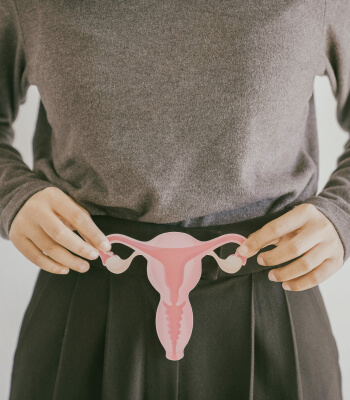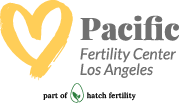Preserve Your Fertility with Egg Freezing at PFCLA
At Pacific Fertility Center Los Angeles, we understand the importance of planning for your future. Egg freezing, also known as oocyte cryopreservation, is a leading-edge technology that allows women to preserve their fertility and expand their family planning options. PFCLA is proud to offer this life-changing service to our patients.
Success Rates for Egg Freezing
PFCLA stands out as the premier destination for egg freezing in Southern California. Our clinic boasts a high success rate for egg freezing and thawing, thanks to our advanced techniques (such as egg vitrification) and experienced team of fertility specialists, embryologists, and nursing staff. While individual success rates can vary based on factors such as age and egg quality, our specialists will provide personalized guidance and support to maximize your chances of success and ensuring that you receive the highest level of care throughout the entire process
At PFCLA, our focus is on providing exceptional patient care and adhering to strict protocols to minimize risks and complications which translates into high success rates and positive outcomes for our clients.
Egg freezing is a safe and well-established procedure to help ensure that your reproductive options remain open.
Why Choose Egg Freezing?
Career and Education
Many women choose to focus on their careers or education before starting a family. Egg freezing allows them the flexibility to pursue their goals without sacrificing their reproductive potential.
Health Conditions
Certain medical conditions or treatments, such as chemotherapy, can adversely impact fertility. Preserving eggs beforehand ensures that you have the opportunity to conceive later on.
Relationship Status
Women who have not yet found the right partner can freeze their eggs to preserve their fertility until they are ready to start a family.
Genetic Concerns
For women with a family history of early menopause or other fertility-related conditions, egg freezing can serve as a proactive measure to safeguard their reproductive future.
The Egg Freezing Process
Our experienced team at PFCLA guides patients through the egg freezing process with care and precision.
Initial Consultation
Our fertility specialists review your medical history, discuss your goals, and determine if egg freezing is the right choice for you.
Ovarian Stimulation
You will undergo hormone injections to stimulate the growth and maturation of multiple eggs within your ovaries. This process typically takes 10-12 days and is closely monitored with blood tests and ultrasounds.
Egg Retrieval
Under light sedation, a skilled PFCLA physician retrieves mature eggs using a minimally invasive, ultrasound-guided procedure.
Cryopreservation
Our expert embryologists carefully freeze and store your eggs in our state-of-the-art laboratory using a process called vitrification, which ensures optimal preservation.
Storage
Your frozen eggs are securely stored in our facility until you are ready to use them for conception.
Options to Consider After Freezing Your Eggs
When you’re ready for pregnancy, your doctor will sit down with you to discuss options you can consider for conception. Below are some of the services you can consider after egg freezing.
Intracytoplasmic Sperm Injection (ICSI)
ICSI is an advanced procedure whereby a single sperm cell is injected directly into the egg for fertilization. This a real breakthrough in fertility technology if you or your male partner suffer from male infertility issues.
In Vitro Fertilization (IVF)
IVF is an advanced form of assisted reproductive technology that helps infertile women and couples conceive. Through IVF, eggs are manually fertilized using a sperm sample from a woman’s partner or donor.
Preimplantation Genetic Screening (PGD/PGS/PGT-A)
Give your baby the best start of a new life through a precise screening of your embryo(s) before your embryo transfer. This test determines the potential risks of genetically transmitted diseases and chromosomal abnormalities.
Hear from Dr. Catherine DeUgarte, reproductive endocrinologist at PFCLA discussing egg, sperm, and embryo freezing.
What to Expect During Your Consultation at PFCLA
During your initial consultation, our fertility specialists will:
- Review your medical history and discuss any relevant factors that may impact your fertility.
- Conduct a comprehensive evaluation, which may include blood tests, ultrasounds, or other diagnostic tests, to assess your ovarian reserve and overall fertility health.
- Discuss the egg freezing process in detail, including potential risks, success rates, and what to expect during each step.
- Address any questions or concerns you may have about the procedure, ensuring that you feel confident and well-informed about your decision.
- Provide a personalized treatment plan tailored to your specific needs and goals, including a detailed cost breakdown and financing options.
Financial Considerations
At PFCLA, we strive to make fertility preservation accessible and affordable.
Customized Financial Packages
We offer flexible and personalized financial plans, tailored to your unique needs and circumstances.
Insurance Coverage
Our financial coordinators can help you navigate insurance coverage and understand the extent of your benefits for fertility preservation.
Financing Options
We partner with trusted third-party lenders to provide financing solutions for egg freezing procedures, making the process more manageable and stress-free.

Egg Freezing FAQs
To help you better understand the egg freezing process, we have compiled a list of frequently asked questions:
Frozen eggs can be stored for an extended period without any significant decline in quality. While there is no specific limit, current research suggests that eggs can be stored for at least 10 years, and potentially much longer.
The optimal age for egg freezing is before the age of 35, as this is when egg quality and quantity are generally at their peak. However, our fertility specialists can evaluate your individual circumstances and provide personalized guidance on the best timing for you.
The number of eggs needed varies based on factors such as age and egg quality. Our fertility specialists will work with you to develop a personalized plan to maximize your chances of success.
Costs for egg freezing can vary depending on individual circumstances and the number of cycles needed. As an estimate, the cost of egg freezing ranges from $6,000 and $10,000 per freezing cycle for California residents plus the cost of medications. Medications are typically around $3,000 to $6,000, depending on how much your body needs. Storage is an additional cost of $700-$1,000 a year. After your initial consultation, our coordinators will provide a detailed breakdown of costs and discuss available financing options.
Your frozen eggs can be used at any time after the freezing process. When you are ready to use them for conception, our team will guide you through the in vitro fertilization (IVF) process using your thawed eggs.
Is Egg Freezing Right for You?
The optimal time to consider egg freezing is when a woman is in her reproductive prime, typically before the age of 35. During this time, both egg quality and quantity are at their peak, increasing the chances of successful preservation and future pregnancy. However, women who are older than 35 should not be discouraged from exploring this option, as individual circumstances vary, and successful outcomes can still be achieved. Consultation with a fertility specialist can help determine the best time for egg freezing based on a woman's unique situation.
Step 1: Fertility Assessment
If you're considering egg freezing and want to understand your current fertility status, scheduling a fertility assessment is the first step. A fertility assessment typically involves a comprehensive evaluation of your reproductive health, including blood tests to measure hormone levels, ultrasounds to assess the ovaries and uterus, and a review of your medical and family history. These tests provide valuable insights into your fertility and can help guide you in making informed decisions about egg freezing and other fertility preservation options.
Step 2: Consult with a Fertility Specialist
Once you have decided to explore egg freezing, it's crucial to consult with a fertility specialist experienced in the field. During the consultation, the specialist will review your fertility assessment results, discuss the egg freezing process in detail, and address any questions or concerns you may have. They will also work with you to create a personalized treatment plan that takes into account your unique needs and goals, ensuring you are well-informed and confident in your decision to proceed with egg freezing.
Step 3: Egg Retrieval and Cryopreservation
After completing a fertility assessment and consulting with a fertility specialist, you can decide if egg freezing is the right choice for you. If you choose to move forward with the process, your fertility team will guide you through each step, from ovarian stimulation and egg retrieval to the cryopreservation and storage of your eggs. By taking this proactive approach to fertility preservation, you can secure your reproductive future and expand your family planning options, giving you the freedom to start a family when you are ready.
Westwood Location
10880 Wilshire Blvd, Ste 300
Los Angeles, CA 90024
Call Us: (310) 564-9194
Glendale Location
1818 Verdugo Blvd, Ste 402
Glendale, CA 91208
Call Us: (310) 564-9194



